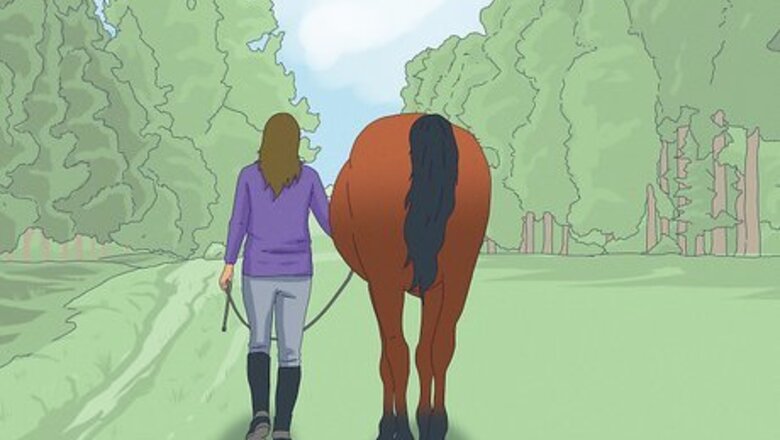
views
Getting Your Horse Used to Rearing
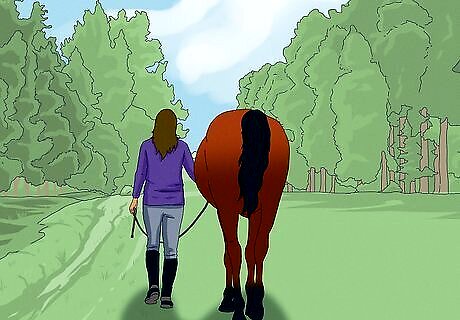
Lead your horse somewhere quiet so he can focus on you. A place with very few distractions is the best place. You want his complete attention to be on you. You also want your horse to be very relaxed and ready to be trained. Avoid a pasture with other horses or other animals. Avoid a pasture where other people are training. Pick a place that is as quiet and calm as possible.
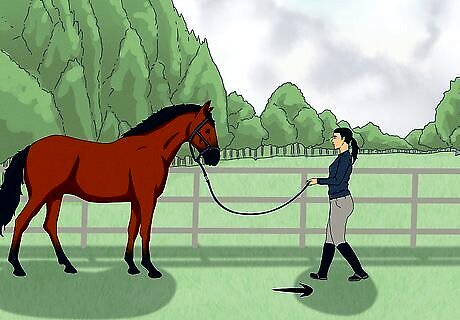
Run forward with your horse, but with your back away from the horse. Leading and teaching by example is one of the best ways to train your horse. Run backwards in front of your horse, but not too quickly. Make sure to put enough distance between you and your horse so that you won't be trampled or run over by accident. Build your horse's momentum forward by running. Make sure your horse and you are running fast enough so that momentum is building. Keep a safe distance. Walk the pasture before so you don't run into a hole and hurt yourself.
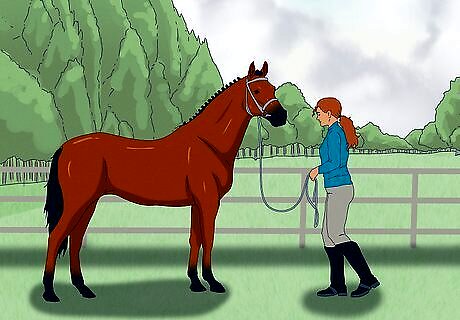
Stop your horse. Stop your horse safely and prepare to transfer his/her energy upward. Use both verbal and visual cues to stop your horse. Previous training will help immensely. Motion and/or verbally command your horse to stop. Keep a positive demeanor and praise your horse when he obeys you. Keep a safe distance.
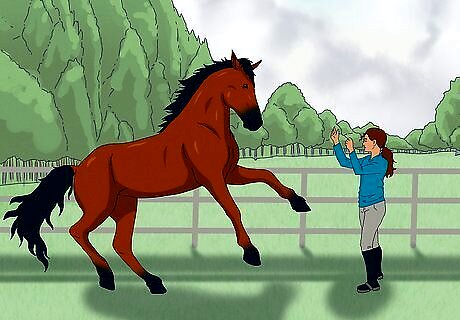
Make an upward motion with your arms toward your horse. Once you've stopped, you need to direct your horse upward. Direct your horse upward by making a motion with your arms. This needs to be done as quickly as possible once the horse has stopped. Pair your upward motion with an appropriate verbal command like “up” or “rear.” This could be dangerous, so don't get too close to your horse. Reward your his behavior whenever he acts the way you want him to. Do not try this with an untrained horse.
Using Verbal Commands
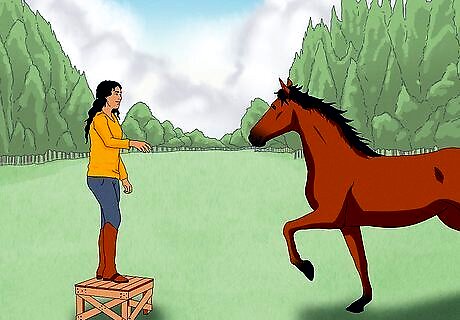
Stand somewhere high to direct your horse. Now that your horse is used to rearing and to your motioning for him to rear, take it to the next level and reinforce the verbal commands you may have been using before. Find a spot to stand, preferably where you'll be higher than your horse. You'll want your horse see you clearly and follow your direction. If you are tall, just stand on the ground in front of your horse.
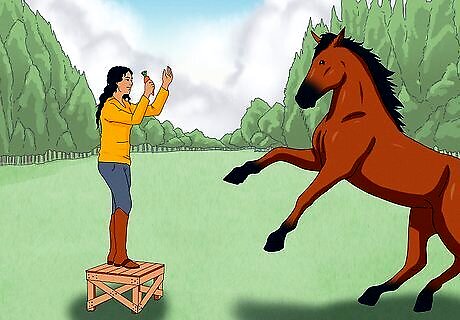
Raise an arm with a treat and command your horse “up” or “rear.” Take your treat in one hand and move it up, sternly saying “up.” He will stretch his neck to try to eat the treat. When he moves his head upward a little bit, reward him with the treat.
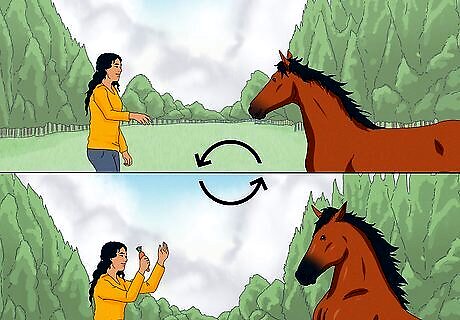
Repeat this process as long as needed. Each time you repeat this, slowly raise your hand a little bit higher. Your horse will continue to stretch his neck, and then slowly move up on his hind feet. Work with your horse and don't tease him with the treat – make sure he always gets it once he's put forth the effort.
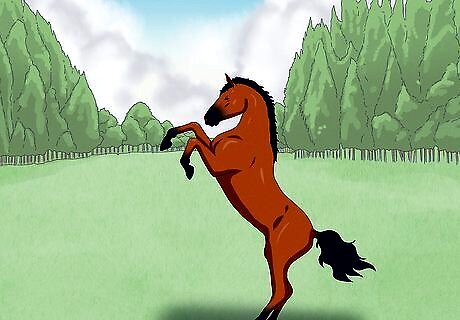
Continue this routine until your horse fully rears. Eventually, he'll rear to the appropriate level in order to get his treat. Remember several things when doing this: You need to have patience with your horse. Continually praise your horse and reward him with treats. This process could take several days or longer.
Riding Your Horse and Rearing
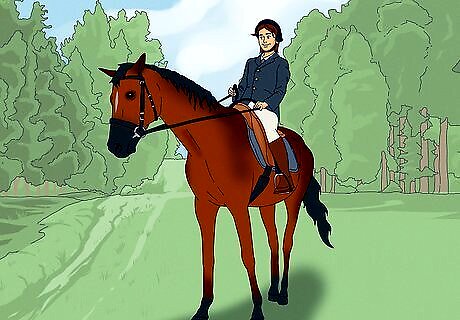
Ride your horse and rear. After you've completed the initial motion and verbal training process, you can now try to rear with your horse. Make sure to do so in an appropriate setting, with someone watching you in case there is an accident. Also, make sure to lean forward when your horse rears. Leaning backwards could result in you falling off, your horse falling over, and both of you being injured.

Use the same "up" cue when riding. When you're on your horse, try to use your command. He may not respond, so use leg pressure, tug lightly on the reins, and press hard into the saddle. Continue to say "up" the whole time until he responds. Don't kick or yell at him if he does not respond the way you want him to.

Release pressure when your horse raises slightly. When he raises slightly, sit lightly, release the reins, take away your legs, and praise your horse. Reward him with a treat afterword. Also, make sure to use a positive tone when you talk to him.

Continue this process until he gets confident, and rears on cue. Over time you'll be able to perfect how your horse rears, how high, and when. Again, you need to be patient in this process and work with your horse as a member of your team. Don't show your frustration, and never take it out on your horse.



















Comments
0 comment